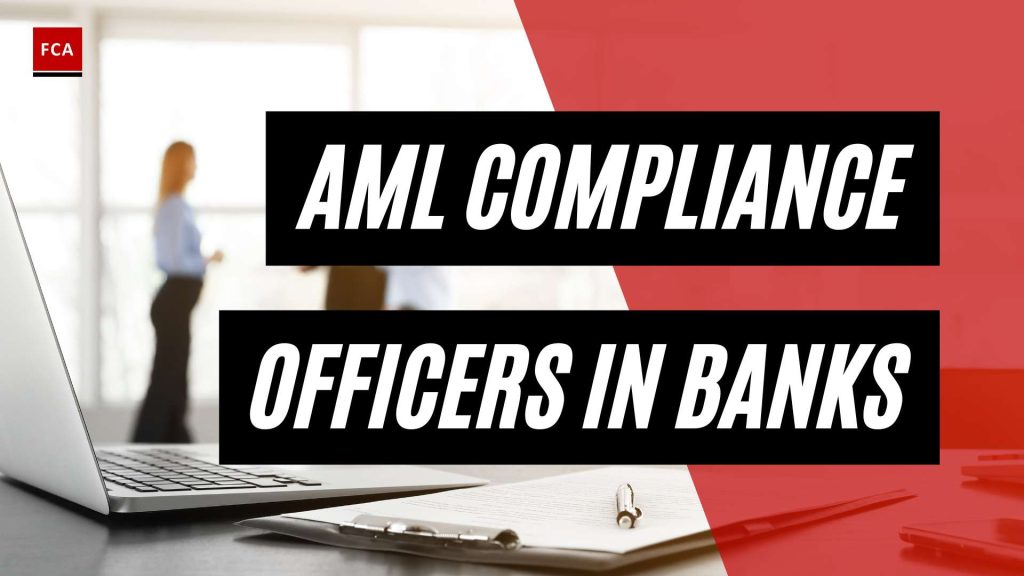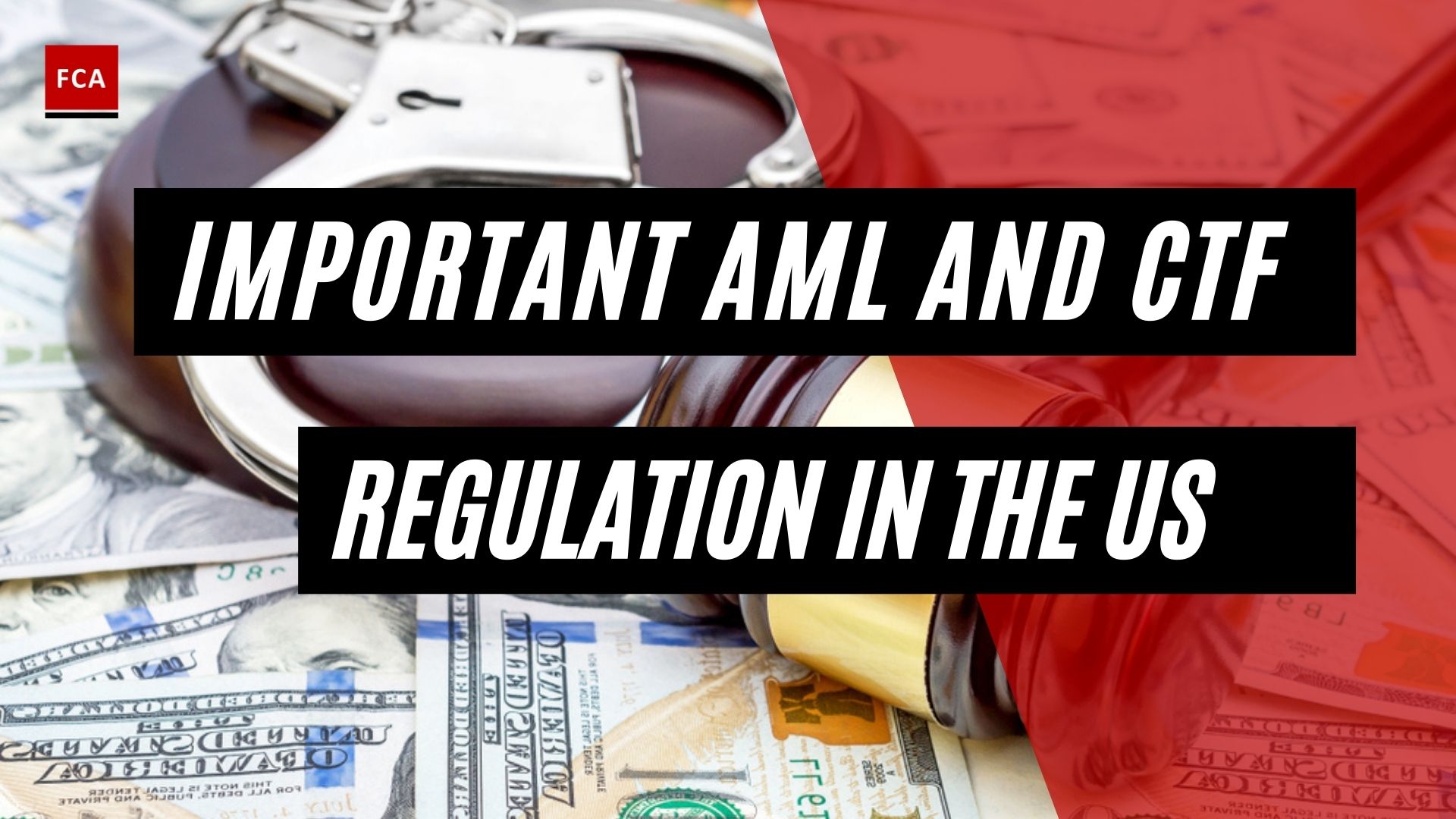AML Compliance Officers in Banks: Roles and Responsibilities
AML compliance officers in banks play a vital role in detecting, preventing, and reporting suspicious activities related to money laundering, terrorist financing, and other illicit financial activities. Their responsibilities extend beyond ensuring compliance with anti-money laundering regulations for banks. Let’s explore the importance of these officers, the qualifications and skills required for the role, and their collaboration with fraud teams for effective AML compliance.
Importance of AML Compliance Officers in Banks
The presence of AML compliance officers is crucial for banks to maintain integrity, protect against financial crimes, and comply with regulatory requirements. These officers are responsible for implementing company-wide AML policies, focusing on internal systems to detect and prevent money laundering activities, and reducing AML compliance costs (Unit21). By diligently carrying out their duties, AML compliance officers contribute to safeguarding the financial system and maintaining the trust of customers and stakeholders.
Qualifications and Skills for AML Compliance Officers
To effectively fulfill their roles, AML compliance officers need a strong foundation of knowledge and skills. These professionals should possess an understanding of AML compliance in banking and the relevant regulatory landscape. Additionally, qualifications and skills that are beneficial for AML compliance officers include:
- Financial Industry Knowledge: A comprehensive understanding of the banking industry, financial products, and transactional processes is essential to identify potential risks and suspicious activities.
- AML Expertise: In-depth knowledge of AML regulations, AML risk assessment in banking methodologies, AML policies for financial institutions, and best practices helps in implementing effective AML compliance programs.
- Analytical Skills: AML compliance officers should possess strong analytical skills to review and interpret complex financial data, identify patterns, and recognize potential red flags.
- Communication Skills: Effective communication, both written and verbal, is crucial for collaborating with internal stakeholders, reporting suspicious transactions, and providing training to bank employees on AML training for bank employees.
- Attention to Detail: Meticulous attention to detail is necessary for identifying and investigating suspicious activities, conducting AML transaction monitoring in banking, and ensuring compliance with regulatory requirements.
- Ethical Conduct: A high level of integrity and ethical conduct is imperative for AML compliance officers to maintain confidentiality, handle sensitive information appropriately, and act in the best interests of the bank and its customers.
Collaboration with Fraud Teams for Effective AML Compliance
In the fight against financial crimes, collaboration between AML compliance officers and fraud teams is crucial. AML compliance officers and fraud teams often work together in a combined effort known as FRAML (fraud and AML) to prevent and detect illicit activities effectively (Unit21). By sharing knowledge, expertise, and insights, these teams can enhance the effectiveness of AML compliance measures and strengthen the overall defense against financial crimes. This collaboration ensures a comprehensive approach to identify and mitigate risks, improve detection capabilities, and maintain compliance with regulatory requirements.
In the next sections, we will explore the process of selecting AML software for banks, the challenges faced by AML compliance officers, and the responsibilities related to recordkeeping and reporting for AML compliance.
Selecting AML Software for Banks
In the ever-evolving landscape of anti-money laundering (AML) compliance, selecting the right AML software is crucial for banks to effectively control and detect suspicious transactions. AML software provides advanced tools and technologies that enable banks to enhance their AML compliance processes and mitigate the risks associated with money laundering. When choosing AML software for their institutions, AML compliance officers should consider key features and functionalities that align with their specific needs and regulatory requirements.
Key Features to Consider in AML Software Selection
When evaluating AML software options, AML compliance officers should prioritize the following key features:
-
Transaction Monitoring: A robust transaction monitoring system is essential for banks to detect and analyze suspicious activities across their customer base. The software should provide real-time monitoring capabilities, advanced analytics, and rule-based alerts to identify potential money laundering activities.
-
Customer Due Diligence (CDD): AML software should have robust CDD capabilities to facilitate thorough customer screening and verification processes. This includes identity verification, risk assessment, and screening against sanction lists, politically exposed persons (PEPs), and adverse media.
-
Watchlist Filtering: Effective watchlist filtering functionality is crucial for banks to identify and flag transactions involving individuals or entities associated with money laundering, terrorism financing, or other criminal activities. The software should provide comprehensive watchlist databases for accurate screening.
-
Reporting and Compliance: AML software should generate comprehensive reports and documentation for regulatory compliance purposes. This includes suspicious activity reports (SARs), currency transaction reports (CTRs), and other required filings. The software should also facilitate audit trails and data retention for recordkeeping.
-
Integration and Scalability: The software should seamlessly integrate with existing banking systems and databases, allowing for efficient data exchange and connectivity. It should also be scalable to accommodate the growing needs of the bank and adapt to changing regulatory requirements.
Top AML Software Solutions for Banks
Based on industry recommendations, some of the top AML software solutions for banks include:
-
Refinitiv World-Check Risk Intelligence: This comprehensive AML software solution offers a global risk intelligence database that enables banks to perform enhanced due diligence on customers and identify potential risks associated with money laundering and financial crimes.
-
Trulioo: Trulioo provides identity verification and AML compliance solutions that leverage advanced technologies such as biometrics and data analytics. Their software helps banks streamline customer onboarding processes while ensuring compliance with AML regulations.
-
Lightico: Lightico offers AML software solutions that combine advanced identity verification, document collection, and data analysis capabilities. Their AI-enhanced tools enable banks to expedite customer-facing journeys, enhance compliance processes, and fight fraud effectively.
These software solutions empower banks to automate and streamline their AML compliance processes, enhance customer experience, and stay ahead of evolving regulatory requirements. AML compliance officers should carefully evaluate these solutions and choose the one that best fits their specific needs and compliance objectives.
By selecting the right AML software, banks can effectively strengthen their AML compliance efforts, identify potential risks, and contribute to the global fight against money laundering and financial crimes.
Challenges Faced by AML Compliance Officers in Banks
While AML compliance officers play a vital role in ensuring the integrity of the banking system, they face numerous challenges in fulfilling their responsibilities effectively. Understanding these challenges is crucial for developing strategies to overcome them. Here are some of the key challenges faced by AML compliance officers in banks:
Complexities of Cross-Border Regulation
The increasingly global nature of financial transactions has led to complex cross-border regulations that AML compliance officers must navigate. A recent survey by PwC found that 48% of AML compliance officers in banks cited cross-border regulation as one of their top concerns (NorthRow). Keeping up with evolving regulations and ensuring compliance across multiple jurisdictions can be a daunting task, requiring extensive knowledge and expertise.
Pressure to File Suspicious Activity Reports (SARs)
AML compliance officers in banks face significant pressure to file Suspicious Activity Reports (SARs) promptly and accurately. According to a survey by ACAMS and Jumio, 71% of AML professionals in banks consider this pressure to be their biggest challenge (NorthRow). Identifying potentially suspicious transactions and determining whether they warrant reporting requires a keen eye for detail and a thorough understanding of money laundering indicators.
Lack of Technology Resources
Managing AML programs effectively relies heavily on technology resources, including advanced analytics and automated monitoring systems. However, a study by KPMG found that 64% of AML compliance officers in banks reported a lack of technology resources as a significant challenge (NorthRow). Without adequate tools and resources, compliance officers may struggle to identify and investigate suspicious activities efficiently.
Increased Workloads and Repetitive Tasks
The ever-growing volume of financial transactions and the increasing complexity of AML regulations have resulted in increased workloads for AML compliance officers. Manual processes and repetitive tasks, such as reviewing alerts and conducting due diligence on customers, can be time-consuming and resource-intensive. Over 60% of AML compliance officers in banks are concerned about these challenges (NorthRow). Implementing automation and advanced technologies can help alleviate these burdens and improve operational efficiency.
Rising Costs of Compliance
Complying with AML regulations can be costly for financial institutions. A survey by SAS revealed that 45% of AML compliance professionals in banks are worried about the rising costs of compliance (NorthRow). Meeting regulatory requirements often involves significant investments in technology, staff training, and ongoing monitoring. Striking a balance between compliance costs and the need for effective AML measures is a continual challenge for AML compliance officers.
By recognizing these challenges, AML compliance officers can proactively address them by implementing robust systems, leveraging technology, and collaborating with relevant stakeholders. Overcoming these hurdles is essential to ensure that banks maintain robust AML programs and effectively combat money laundering and other financial crimes.
AML Compliance in Banking: Regulations and Processes
Ensuring compliance with anti-money laundering (AML) regulations is of utmost importance in the banking industry. AML compliance officers play a vital role in detecting, preventing, and reporting suspicious activities related to money laundering, terrorist financing, and other illicit financial activities in financial institutions like banks (Unit21). Let’s explore the responsibilities and processes involved in AML compliance in banking.
Responsibilities of AML Compliance Officers
AML compliance officers are responsible for implementing company-wide AML policies and procedures, focusing on internal systems to detect and prevent money laundering activities (Unit21). They must ensure that the bank’s operations adhere to the anti-money laundering regulations for banks set out by government authorities.
Key responsibilities of AML compliance officers include:
- Implementing and monitoring AML policies and procedures in the bank.
- Conducting risk assessments and identifying high-risk customers and transactions.
- Conducting due diligence on customers, especially high-risk clients, to ensure compliance.
- Monitoring and investigating any suspicious activities that could be related to money laundering or terrorism financing activities.
- Reporting suspicious transactions to the appropriate authorities.
- Regularly training and educating staff members on AML practices and regulations (Alessa).
Due Diligence on Customers and Ongoing Monitoring
One of the crucial responsibilities of AML compliance officers is conducting due diligence on customers. This involves verifying the identity of customers, assessing their risk profile, and ensuring that the bank is not inadvertently involved in any illicit financial activities. Due diligence helps identify and mitigate potential risks associated with money laundering.
AML compliance officers also oversee ongoing monitoring of customer transactions. This involves reviewing and analyzing transactions to identify any suspicious patterns or activities. Regular monitoring ensures that any unusual or potentially fraudulent activities are promptly detected and reported.
Staying Informed about Evolving Money Laundering Tactics
Money laundering tactics are constantly evolving, making it essential for AML compliance officers to stay informed about emerging trends and typologies in money laundering activities (Alessa). Criminals adapt their tactics using technologies like cryptocurrencies and complex transactions through shell companies, offshore accounts, and trade-based methods. AML officers must constantly update their knowledge and skills to effectively combat these evolving tactics.
Staying informed involves:
- Engaging in continuous education and professional development related to AML practices.
- Keeping up with industry news, regulatory updates, and best practices.
- Participating in relevant training programs, workshops, and conferences.
- Collaborating with industry peers and sharing insights and experiences.
By staying informed, AML compliance officers can proactively identify new risks and implement appropriate measures to detect and prevent money laundering activities.
AML compliance officers in banks play a critical role in maintaining the integrity of the financial system and protecting against money laundering and illicit financial activities. Their responsibilities include due diligence on customers, ongoing monitoring, and staying informed about evolving money laundering tactics. By fulfilling these responsibilities, they contribute to a robust AML compliance framework within banks, promoting financial security and regulatory compliance.
Balancing AML Compliance with Business Needs
Ensuring effective AML compliance in banking requires striking a delicate balance between compliance requirements and the strategic objectives of the business. AML compliance officers play a crucial role in achieving this balance by collaborating with business leaders, leveraging technology and automation, and integrating compliance efforts into the overall strategy of the organization.
Collaboration with Business Leaders
Collaboration between AML compliance officers and business leaders is essential to align compliance objectives with the broader goals of the organization. By involving business leaders in the decision-making process, compliance officers can gain a deeper understanding of the business’s unique needs and challenges. This collaboration allows for the development of compliance policies and procedures that are tailored to the specific requirements of the organization while ensuring adherence to anti-money laundering regulations for banks.
Through ongoing communication and collaboration, AML compliance officers can foster a culture of compliance throughout the organization. By educating business leaders about the importance of AML compliance and the potential risks associated with non-compliance, they can gain their support and cooperation in implementing effective compliance measures.
Leveraging Technology and Automation
In the digital age, technology plays a vital role in enhancing AML compliance processes. AML compliance officers can leverage advanced technologies and automation tools to streamline compliance efforts, improve efficiency, and reduce the burden of repetitive tasks. Implementing AML software solutions for banks can significantly enhance transaction monitoring, customer due diligence, and suspicious activity detection.
By automating routine tasks such as data analysis, transaction monitoring, and risk assessment, AML compliance officers can focus their efforts on more complex and strategic aspects of compliance. Additionally, technology-driven solutions provide real-time alerts and advanced analytics, enabling proactive identification and prevention of potential money laundering activities.
Integrating Compliance into the Overall Strategy
To effectively balance AML compliance with business needs, compliance efforts must be integrated into the overall strategy of the organization. AML compliance officers should actively participate in strategic planning discussions and ensure that compliance considerations are woven into decision-making processes. By integrating compliance into the organization’s overall strategy, compliance officers can avoid conflicts between business objectives and AML requirements.
By demonstrating the value of compliance in terms of risk mitigation, reputation protection, and long-term sustainability, AML compliance officers can gain the support of senior management and the board of directors. This support is essential for securing the necessary resources and organizational commitment to achieve and maintain AML compliance.
By collaborating with business leaders, leveraging technology and automation, and integrating compliance efforts into the overall strategy, AML compliance officers can effectively balance the requirements of AML regulations with the business needs of the organization. This balanced approach minimizes operational impacts while protecting the organization from the risks of money laundering and other financial crimes.
Recordkeeping and Reporting for AML Compliance
To ensure effective anti-money laundering (AML) compliance in banks, meticulous recordkeeping and accurate reporting are essential. AML compliance officers play a critical role in maintaining comprehensive records and providing regular reports to senior management and the board of directors. Let’s explore the importance of recordkeeping, audits, and reporting in the context of AML compliance.
Importance of Meticulous Recordkeeping
AML compliance officers must keep meticulous records of all their AML activities to demonstrate the bank’s adherence to AML laws and regulations. These records include reports of suspicious activities, risk assessments, training records, and other relevant documentation. Thorough recordkeeping is crucial as AML compliance officers are often subject to audits from regulatory bodies. Maintaining detailed records allows for transparency, accountability, and the ability to provide evidence of compliance during audits. It also aids in identifying potential areas of improvement and enhancing the overall effectiveness of the bank’s AML program.
Audits and Demonstrating Compliance
Regular audits are conducted to assess the bank’s compliance with anti-money laundering regulations for banks. AML compliance officers must be prepared to provide all necessary documentation and evidence during these audits. By maintaining accurate and up-to-date records, compliance officers can demonstrate that the bank has implemented appropriate AML procedures and measures to prevent money laundering and meet regulatory requirements. Audits help identify any gaps or weaknesses in the bank’s AML program, allowing for prompt corrective actions and continuous improvement.
Reporting to Senior Management and Board of Directors
AML compliance officers have a responsibility to report regularly to senior management and the board of directors on the bank’s AML efforts and any areas of concern or improvement needed. These reports provide an overview of the bank’s AML program, its effectiveness, and any emerging risks or trends. Clear and concise reporting helps senior management and the board of directors make informed decisions regarding AML policies, resource allocation, and strategic planning. It also ensures that AML compliance remains a priority throughout the organization and enables effective communication between compliance officers and key stakeholders.
By prioritizing meticulous recordkeeping, conducting regular audits, and providing comprehensive reports, AML compliance officers contribute significantly to the bank’s overall AML compliance efforts. They demonstrate the bank’s commitment to preventing money laundering, protecting its reputation, and complying with regulatory requirements. Effective recordkeeping, audits, and reporting build trust with regulatory bodies and stakeholders, reinforcing the bank’s dedication to maintaining a robust AML program.








